Lysine Reactions: Exploring the Chemical Versatility of an Essential Amino Acid
What are the key reactions of lysine in biochemistry. How does lysine participate in nucleophilic substitution reactions. What are the applications of lysine’s reactivity in protein modification and analysis.
The Nucleophilic Nature of Lysine: A Foundation for Diverse Reactions
Lysine, an essential amino acid, plays a crucial role in various biochemical processes due to its unique reactivity. The primary amine group on its side chain makes lysine a potent nucleophile, enabling it to participate in a wide range of chemical reactions. This reactivity is fundamental to many protein modifications and analytical techniques in biochemistry.
Why is lysine so reactive? The answer lies in its structure. The epsilon-amino group (ε-NH2) at the end of lysine’s side chain is typically protonated at physiological pH, but it can easily deprotonate to form a strong nucleophile. This nucleophilicity is the driving force behind many of lysine’s reactions.

Acylation Reactions: Modifying Lysine’s Amine Group
One of the most common reactions involving lysine is acylation. In this process, the amine group of lysine reacts with an anhydride in a nucleophilic substitution reaction. This reaction is widely used in protein chemistry for various purposes, including protein labeling and crosslinking.
How does the acylation of lysine occur? The mechanism involves the nucleophilic attack of lysine’s amine group on the carbonyl carbon of the anhydride. This results in the formation of an amide bond and the release of a carboxylate group.
Reversible Acylation with Citraconic Anhydride
An interesting variant of the acylation reaction involves methylmaleic anhydride, also known as citraconic anhydride. This reaction is particularly useful because it is reversible under certain conditions. The reversibility allows for temporary modification of lysine residues, which can be advantageous in certain experimental setups or protein purification strategies.

Amidination: A Specific Reaction for Lysine Modification
Amidination is another important reaction of lysine, characterized by high specificity and yield. In this reaction, lysine reacts with ethylacetimidate in a nucleophilic substitution reaction. Ethylacetimidate is structurally similar to ethyl acetate, but with an imido group replacing the carbonyl oxygen.
What happens during the amidination reaction? The amine group of lysine attacks the carbon of the imidate, leading to the formation of an amidine group. This process is accompanied by the expulsion of ethanol. The resulting amidine group contains two nitrogen atoms attached to a central carbon, which is why it’s sometimes referred to as a “din” group.
Guanidination: Transforming Lysine into a Guanidino Group
Guanidination is a powerful tool for protein modification, where lysine’s amine group is converted into a guanidino group. This reaction involves O-methylisourea as the reagent in a nucleophilic substitution reaction.
How does guanidination change lysine’s properties? The guanidino group formed in this reaction contains three nitrogen atoms attached to a central carbon (hence “nidi”). This modification can significantly alter the charge distribution and hydrogen bonding capabilities of the modified lysine residue, potentially affecting protein structure and function.
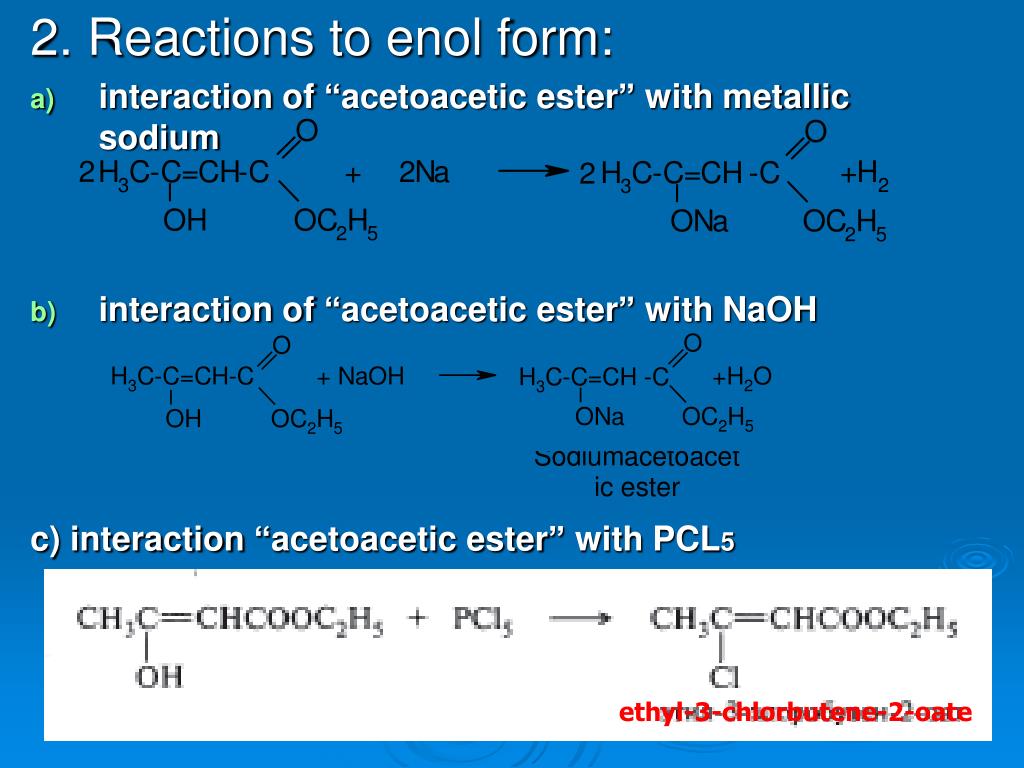
Lysine in Protein Analysis: Colorimetric and Fluorescent Labeling
The reactivity of lysine is extensively utilized in protein analysis techniques, particularly in colorimetric and fluorescent labeling methods. These reactions allow researchers to visualize and quantify proteins, as well as study their structure and interactions.
Reaction with FDNB and TNBS
Lysine reacts with fluorodinitrobenzene (FDNB), also known as Sanger’s reagent, or trinitrobenzenesulfonate (TNBS) in a nucleophilic aromatic substitution reaction. These reactions form colored products (2,4-DNP-lysine or TNB-lysine), which can be easily detected and quantified.
Why are these reactions important in biochemistry? They provide a means to determine the number of free amino groups in a protein, which can give insights into protein structure and modifications. The colored products formed are stable and can be analyzed using spectrophotometric methods.
Fluorescent Labeling with Dansyl Chloride
Another valuable analytical tool involving lysine is its reaction with dimethylaminonaphthalenesulfonyl chloride, commonly known as dansyl chloride. This reaction results in the formation of a fluorescent product, which is extremely useful for protein detection and quantification in various biochemical assays.

How does dansyl chloride labeling enhance protein analysis? The fluorescent properties of the dansyl group allow for highly sensitive detection of proteins, even at very low concentrations. This technique is particularly useful in chromatography and electrophoresis applications.
Imine Formation: Lysine’s Reaction with Aldehydes
Lysine exhibits high specificity in its reaction with aldehydes to form imines, also known as Schiff bases. This reaction is reversible and plays a crucial role in various biological processes, including enzyme catalysis and protein crosslinking.
What makes the imine formation reaction significant? The reversibility of this reaction allows for dynamic modifications in biological systems. Moreover, the imine can be reduced to form a stable secondary amine, which is often used in protein modification techniques.
Reduction of Imines: Creating Stable Protein Modifications
The imines formed by the reaction of lysine with aldehydes can be reduced using sodium borohydride or cyanoborohydride. This reduction converts the reversible imine linkage into a stable secondary amine bond.

Why is the reduction of imines important in biochemistry? The formation of a stable secondary amine allows for permanent modification of proteins. This technique is widely used in protein-protein crosslinking, immobilization of proteins on solid supports, and the creation of bioconjugates for various applications in biotechnology and medicine.
Applications of Lysine Reactivity in Biotechnology and Medicine
The diverse reactivity of lysine has far-reaching applications in biotechnology and medicine. These reactions are utilized in various fields, from protein engineering to drug development.
Protein Engineering and Modification
How does lysine reactivity contribute to protein engineering? The specific reactions of lysine allow for targeted modifications of proteins. This can be used to alter protein stability, introduce new functionalities, or create protein-drug conjugates. For instance, the acylation of lysine residues can be used to PEGylate proteins, increasing their circulatory half-life for therapeutic applications.

Bioconjugation and Drug Development
In the field of drug development, lysine’s reactivity is often exploited for the creation of antibody-drug conjugates (ADCs). These therapeutic agents combine the specificity of antibodies with the potency of cytotoxic drugs. The various lysine modification reactions provide multiple strategies for attaching drugs to antibodies, allowing for optimized drug delivery and efficacy.
Protein Crosslinking and Structural Studies
How does lysine contribute to our understanding of protein structure? Lysine’s ability to form crosslinks, either through direct reactions or via bifunctional reagents, is invaluable in structural biology. These crosslinks can provide information about protein-protein interactions, conformational changes, and the spatial arrangement of protein subunits.
Challenges and Considerations in Lysine Modification
While the reactivity of lysine offers numerous opportunities in biochemistry and biotechnology, it also presents certain challenges that need to be considered in experimental design and data interpretation.

Specificity and Selectivity
How can researchers ensure specific modification of lysine residues? The high abundance of lysine in proteins can sometimes lead to over-modification or non-specific reactions. Careful control of reaction conditions, such as pH and reagent concentration, is crucial to achieve selective modification of specific lysine residues.
Impact on Protein Function
What are the potential consequences of lysine modification on protein function? Modification of lysine residues can alter the charge, hydrophobicity, and hydrogen bonding capabilities of proteins. This can potentially impact protein folding, stability, and function. Researchers must carefully evaluate the effects of lysine modifications on protein activity and physiological relevance.
Reversibility and Stability
How does the reversibility of some lysine modifications affect their applications? While reversible modifications like imine formation can be advantageous for dynamic systems, they may pose challenges in certain applications requiring stable modifications. The choice between reversible and irreversible modifications depends on the specific requirements of the application and the desired outcome.
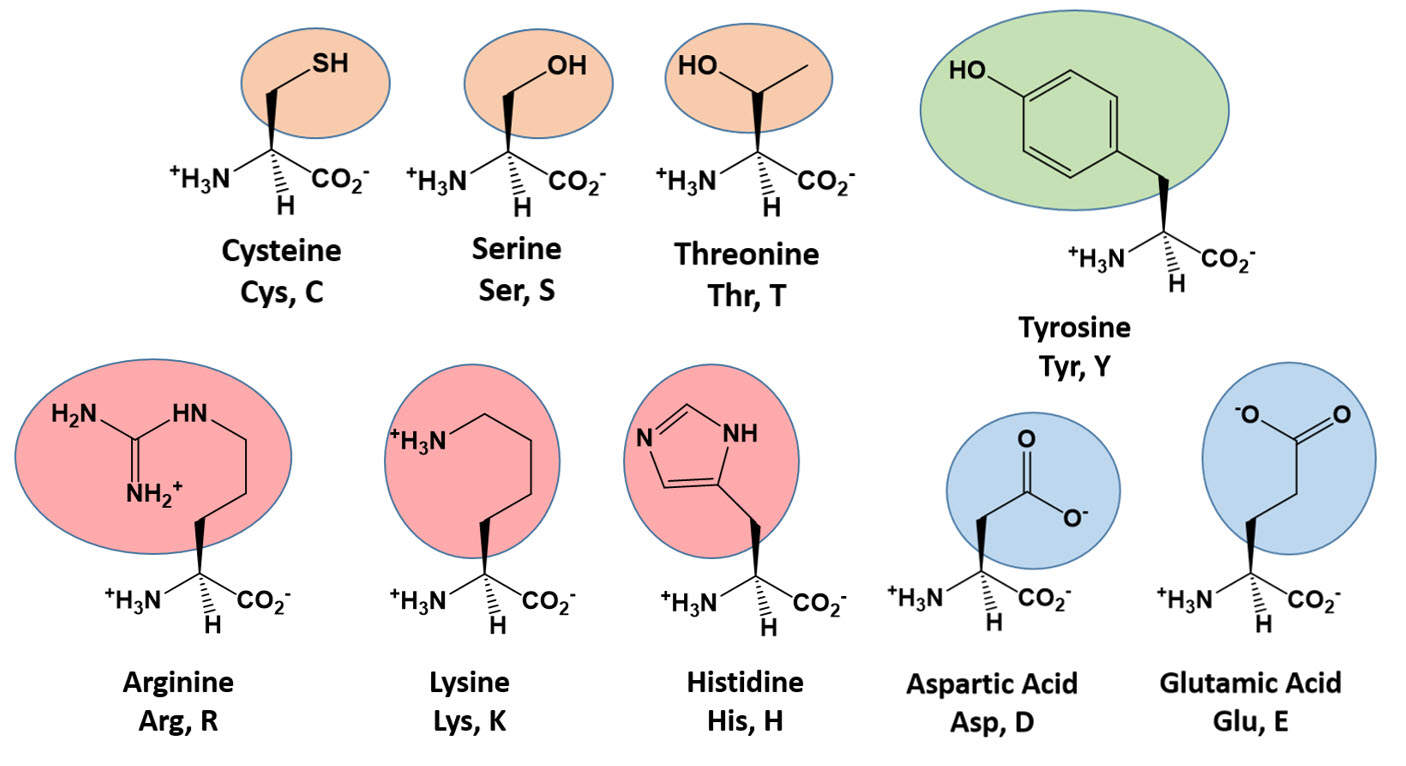
In conclusion, the diverse reactivity of lysine makes it a versatile tool in biochemistry and biotechnology. From protein analysis and modification to drug development and structural studies, lysine’s reactions offer a wide array of possibilities. However, careful consideration of specificity, functional impact, and stability is essential when working with lysine modifications. As our understanding of protein chemistry continues to evolve, the applications of lysine reactivity are likely to expand, opening new avenues in biomedical research and therapeutic development.
2.1.5: A5. Reactions of Lysine
- Last updated
- Save as PDF
- Page ID
- 64199
- Henry Jakubowski
- College of St. Benedict/St. John’s University
- reacts with anhydride in a nucleophilic substitution reaction (acylation).
- reacts reversibly with methylmaleic anhydride (also called citraconic anhydride) in a nucleophilic substitution reaction.
- reacts with high specificity and yield toward ethylacetimidate in a nucleophilic substitution reaction (ethylacetimidate is like ethylacetate only with a imido group replacing the carbonyl oxygen). Ethanol leaves as the amidino group forms. (has two N -i.e. din – attached to the C)
Figure: LYSINE REACTIONS 2
- reacts with O-methylisourea in a nucleophilic substitution reaction.
 with the expulsion of methanol to form a guanidino group (has 3 N attached to C, nidi)
with the expulsion of methanol to form a guanidino group (has 3 N attached to C, nidi) - reacts with fluorodintirobenzene (FDNB or Sanger’s reagent) or trinitrobenzenesulfonate (TNBS, as we saw with the reaction with phosphatidylethanolamine) in a nucleophilic aromatic substitution reaction to form 2,4-DNP-lysine or TNB-lysine.
- reacts with Dimethylaminonapthelenesulfonylchloride (Dansyl Chloride) in a nucleophilic substitution reaction.
Figure: LYSINE REACTIONS 3
- reacts with high specificity toward aldehydes to form imines (Schiff bases), which can be reduced with sodium borohydride or cyanoborohydride to form a secondary amine.
- Prof. Henry Jakubowski (College of St. Benedict/St. John’s University)
This page titled 2.1.5: A5. Reactions of Lysine is shared under a CC BY-NC-SA license and was authored, remixed, and/or curated by Henry Jakubowski.
- Back to top
- Was this article helpful?
- Article type
- Section or Page
- Author
- Henry Jakubowski
- License
- CC BY-NC-SA
- Show TOC
- no
- Transcluded
- yes
- Tags
- source[1]-bio-4692
Reactions of Lysine
Reactions of Lysine
BIOCHEMISTRY – DR. JAKUBOWSKI
JAKUBOWSKI
Last Update:
02/27/16
|
Learning Goals/Objectives for Chapter 2A: After class and
|
- reacts with anhydride in a nucleophilic substitution reaction
(acylation). - reacts reversibly with methylmaleic anhydride (also called
citraconic anhydride) in a nucleophilic substitution reaction.
- reacts with high specificity and yield toward ethylacetimidate in a
nucleophilic substitution reaction (ethylacetimidate is like
ethylacetate only with a imido group replacing the carbonyl oxygen).
Ethanol leaves as the amidino group forms. (has two N -i.e. din –
attached to the C)
Figure: LYSINE REACTIONS 2
- reacts with O-methylisourea in a nucleophilic substitution reaction.
with the expulsion of methanol to form a guanidino group (has 3 N
attached to C, nidi) - reacts with fluorodintirobenzene (FDNB or Sanger’s reagent) or
trinitrobenzenesulfonate (TNBS, as we saw with the reaction with
phosphatidylethanolamine) in a nucleophilic aromatic substitution
reaction to form 2,4-DNP-lysine or TNB-lysine. - reacts with Dimethylaminonapthelenesulfonylchloride
(Dansyl Chloride) in a nucleophilic substitution reaction.
Figure: LYSINE REACTIONS 3
- reacts with high specificity toward aldehydes to form imines (Schiff
bases), which can be reduced with sodium borohydride or cyanoborohydride
to form a secondary amine.
Navigation
Return to
Chapter
2A: Amino Acid Sections
Return to
Biochemistry Online Table of Contents
Archived version of full
Chapter
2A: Amino Acids
Biochemistry Online by Henry Jakubowski is licensed under a Creative Commons Attribution-NonCommercial 4.0 International License.
Argumentation of symptomatic therapy of acute tonsillopharyngitis | Morozova S.V.
Diagnosis and treatment of acute infectious and inflammatory diseases of the pharynx is one of the main problems solved by practical otorhinolaryngology. The pharynx, located at the junction of the respiratory and digestive tracts, is subject to the action of numerous damaging factors that can disrupt the protective and adaptive reactions and the functioning of the mucous membrane and the lymphoid apparatus of the pharynx.
The pharynx, located at the junction of the respiratory and digestive tracts, is subject to the action of numerous damaging factors that can disrupt the protective and adaptive reactions and the functioning of the mucous membrane and the lymphoid apparatus of the pharynx.
The reasons contributing to the occurrence of pharyngeal pathological changes are numerous and varied: exposure to an infectious agent, diseases of the gastrointestinal tract (GIT), diseases of the teeth and periodontium, smoking, adverse environmental, professional and domestic factors, diet errors, trauma.
It is important to note the medical and social significance of the problem. Thus, acute respiratory viral diseases, the annual incidence of which is up to 8 people per 1,000 population, are accompanied by inflammation in the respiratory tract affecting the pharynx [4]. A high level of morbidity leads to a large number of outpatient visits of the working population and students, an increase in the level of temporary disability both in the number of cases and in the number of days missed due to illness and care, to significant expenses for the purchase of medicines – within the family budget and significant financial losses – on a national scale.
Undoubtedly, one of the most common diseases of the pharynx is acute tonsillopharyngitis, which is confirmed by the high level of morbidity and the appeal of patients to general practitioners and otorhinolaryngologists. In the implementation of the disease, the leading role belongs to the infectious factor (viruses, bacteria, fungi) with a significant predominance of viruses (adenoviruses, rhinoviruses, coronaviruses, influenza viruses, parainfluenza viruses, Coxsackie A viruses, etc.). According to modern domestic scientific and clinical studies, which allow a clear idea of the nature and sensitivity of the key bacterial pathogens of acute infectious and inflammatory diseases of the pharynx (microorganisms isolated with a clinically significant degree of contamination over 104 CFU / ml), the leading role is played by Streptococcus pyogenes. In patients with bacterial tonsillitis, the inoculation of group A β-hemolytic streptococcus (GABHS) reaches 80–100%, less often group C and G streptococci, Corynebacterium diphtheriae, Neisseria gonorrhoeae, Arcanobacterium haemolyticum are isolated [4, 7].
In the practice of a doctor, it is necessary to take into account the importance of identifying acute “streptococcal” tonsillopharyngitis, when the disease has a severe, protracted course, there are cases of systemic inflammatory response syndrome (SIRS). With tonsillopharyngitis caused by GABHS, there is a high probability of developing severe complications and life-threatening conditions, such as meningitis, pneumonia, sepsis, toxic shock syndrome, rheumatic fever, post-streptococcal glomerulonephritis, etc.
In acute “streptococcal” tonsillopharyngitis, the most likely routes of infection are contact and airborne. The reservoir is, as a rule, a sick person or a carrier; colonization of the pathogen is possible on the skin, mucous membrane of the pharynx and nasal cavity. An alimentary route of infection is possible – with improper storage of food, in particular dairy products. Predisposing factors for the onset of the disease are local and general hypothermia, a decrease in general and local immunity, and sometimes mechanical trauma to the tonsils.
The disease is characterized by a sudden onset, intense sore throat, most pronounced when swallowing, a feeling of dryness, soreness, sore throat, moderate (febrile) fever, headache. Patients note general weakness, malaise, loss of appetite, aching pain in the limbs. The “tonsillar” lymph nodes enlarge and become painful on palpation. With pharyngoscopy, a bright diffuse reddening of the mucous membrane of the pharynx is determined, changes in the palatine tonsils may correspond to one of the forms of primary (vulgar) tonsillitis: the palatine tonsils are enlarged, edematous and hyperemic (catarrhal tonsillitis), yellowish-white plaques are visible on the surface of the palatine tonsils (lacunar tonsillitis). ), festering follicles in the form of small yellowish vesicles (follicular tonsillitis).
The McIsaac scale helps to determine the degree of probability of streptococcal etiology of acute tonsillopharyngitis at the first stage of assessing the patient’s condition, based on the clinical manifestations of the disease. Analysis and quantitative (scoring) assessment of such criteria as fever, cough, condition of the cervical lymph nodes, palatine tonsils, patient’s age allow, with a high degree of probability, to assess the risk of streptococcal infection and determine the tactics of treatment and diagnostic measures [8]. At the same time, patients with infectious and inflammatory diseases of the pharynx, of course, need a multifaceted examination, including, in particular, such informative studies as bacteriological and immunological, which makes it possible to fully diagnose both the disease and the diagnosis of the patient. It should be recognized that in modern conditions, laboratory information is extremely important for high-quality clinical diagnostics [3].
Analysis and quantitative (scoring) assessment of such criteria as fever, cough, condition of the cervical lymph nodes, palatine tonsils, patient’s age allow, with a high degree of probability, to assess the risk of streptococcal infection and determine the tactics of treatment and diagnostic measures [8]. At the same time, patients with infectious and inflammatory diseases of the pharynx, of course, need a multifaceted examination, including, in particular, such informative studies as bacteriological and immunological, which makes it possible to fully diagnose both the disease and the diagnosis of the patient. It should be recognized that in modern conditions, laboratory information is extremely important for high-quality clinical diagnostics [3].
The bacteriological method is the isolation of a pure culture of the pathogen and its identification, determination of its sensitivity to antibiotics and other chemotherapeutic drugs. Both the classical culture method by inoculation and express methods for identifying group A streptococci are used: immunochromatographic rapid test for GABHS antigens in throat swabs, methods for detecting pathogen antigens (enzyme-linked immunosorbent assay and direct immunofluorescence), methods for detecting pathogen DNA (polymerase chain reaction ), which are characterized by high sensitivity and absolute specificity.
Immunological examination allows diagnosing primary and secondary immunological deficiency. Secondary (acquired) immunological deficiency – damage to the initially unchanged immune system under the influence of various exogenous factors (infections, tumors, renal failure, long-term use of glucocorticosteroids, cytostatics). Primary (congenital) immunological deficiency is much less common – the inability of the body to implement one or another link of the immune response due to a genetically determined defect or impaired development of the lymphoid system in ontogenesis.
Diagnostics involves carrying out tests of the 1st level, which include the determination of the absolute and relative number of lymphocytes, T- and B-lymphocytes, the level of serum lg (IgM, IgG, IgA), phagocytic activity of leukocytes, as well as tests of the 2nd level: determination regulatory subpopulations (T-helpers, T-suppressors), interleukin-producing activity of cells, assessment of the proliferative activity of T- and B-lymphocytes in the reaction of blast transformation, killer activity of lymphocytes, identification of immune complexes, etc.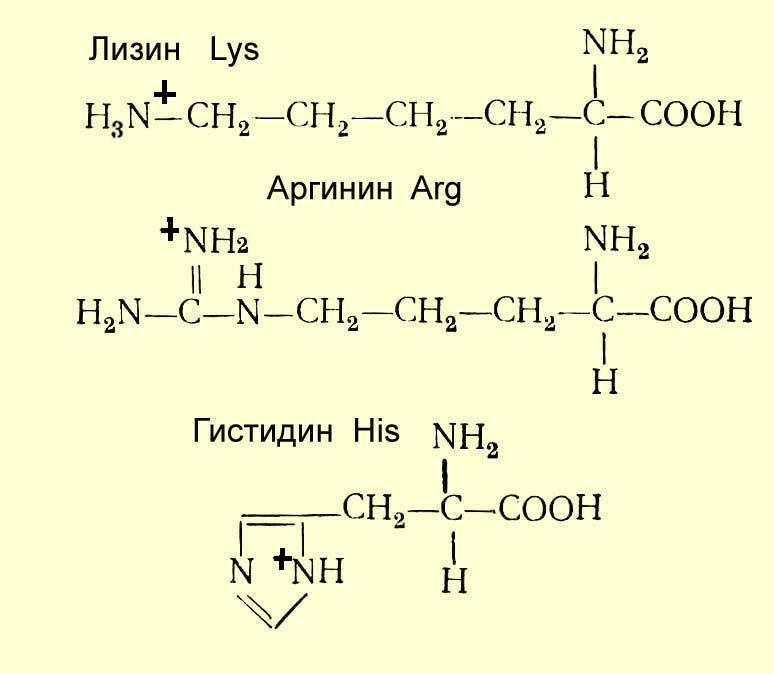
An important stage in the diagnosis of acute tonsillopharyngitis is differential diagnosis with diseases that have a similar symptom complex (infectious mononucleosis, diphtheria). Children’s respiratory tract infections (scarlet fever, measles) are accompanied by catarrhal oropharyngeal changes. Changes in the pharyngeal mucosa in diseases of the gastrointestinal tract (chronic gastritis, peptic ulcer, oral dysbacteriosis, gastroesophageal reflux disease, cholecystitis, pancreatitis) are very common [2].
Often, the initial and determining factor, subjectively regarded as a state of ill health, which forces patients to seek medical help, is the occurrence and severity of pain when swallowing, as well as soreness, perspiration, dry paroxysmal cough. Among the extremely numerous and diverse causes of sore throat (neuralgia of the glossopharyngeal nerve, spinal diseases, cardiovascular diseases (angina pectoris, myocardial infarction), thyroiditis, injuries and foreign bodies of the pharynx and esophagus, mental disorders, AIDS, oropharyngeal cancer, etc.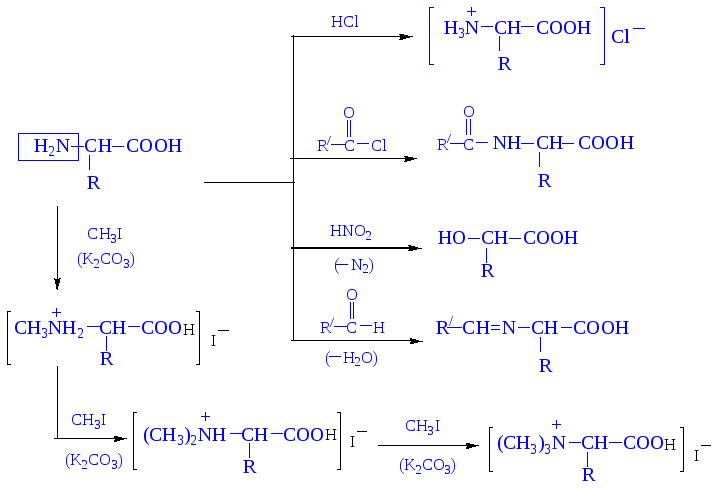 ) tonsillopharyngitis is one of the most common etiological factors [6, 11].
) tonsillopharyngitis is one of the most common etiological factors [6, 11].
The appearance of acute pain in the throat performs a signal function in case of inflammation of the pharynx, indicates the presence of a damaging factor, initiates protective-compensatory-adaptive processes in the body, therefore, in relation to acute tonsillopharyngitis, the expression that has become a popular expression is quite appropriate: “Pain is the watchdog of health.” However, with a sharp intensity and duration of pain, overstrain occurs, the patient develops a negative psycho-emotional state, he experiences painful anguish, and there is a clear motivation to eliminate pain as an extremely negative sensation. Pain disrupts the vital activity of the human body, inevitably affects the quality of life – an indicator directly related to the state of health, from the category of positive factors goes into the category of negative ones and needs to be eliminated [1, 5]. Pain sensations are characterized by a wide range of individual fluctuations.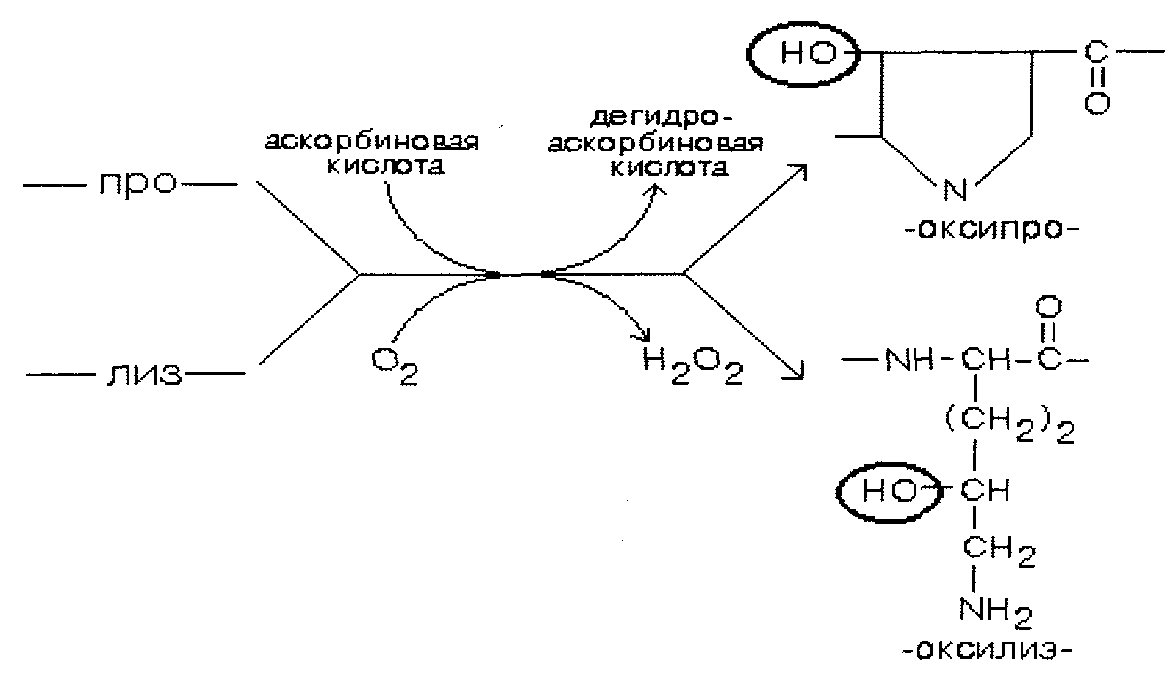 According to the severity of pain in acute infectious and inflammatory diseases of the pharynx, patients largely judge the severity of the disease and expect from the therapy, first of all, complete relief from pain.
According to the severity of pain in acute infectious and inflammatory diseases of the pharynx, patients largely judge the severity of the disease and expect from the therapy, first of all, complete relief from pain.
These factors cannot be ignored when assessing the patient’s condition, developing therapeutic tactics and determining the effectiveness of the therapy. In this case, 2 main approaches are used: assessing the intensity of pain (“how much the patient suffers”) and assessing the impact of pain on well-being in general (“psychological state, quality of life”) [13]. Scales for the subjective assessment of the severity of pain by the patient at the time of the study are widely used in clinical practice: a visual analogue scale of pain, as well as a digital rating scale that has a number of advantages, consisting of 11 points, where 0 means no pain, 10 means pain that cannot be tolerated [ 15].
In the treatment of acute infectious and inflammatory diseases of the pharynx, drugs with antimicrobial, anti-inflammatory, analgesic, immunocorrective effects are currently used: antibacterial drugs, topical immunocorrective vaccine preparations, local antiseptics, decongestants, and hyposensitizing drugs [7]. In the complex of therapeutic measures for diseases of the pharynx, accompanied by pain, fever, an important role belongs to drugs that have a symptomatic therapeutic effect. Timely and adequate symptomatic therapy for acute tonsillopharyngitis is no less important than etiopathogenetic treatment, since its goals are to reduce the severity and eliminate the clinical manifestations of the disease, which have a significant negative impact on the patient’s daily life, to preserve his ability to perform household activities and social activity.
In the complex of therapeutic measures for diseases of the pharynx, accompanied by pain, fever, an important role belongs to drugs that have a symptomatic therapeutic effect. Timely and adequate symptomatic therapy for acute tonsillopharyngitis is no less important than etiopathogenetic treatment, since its goals are to reduce the severity and eliminate the clinical manifestations of the disease, which have a significant negative impact on the patient’s daily life, to preserve his ability to perform household activities and social activity.
One of the most commonly used groups of drugs with analgesic, antipyretic and anti-inflammatory effects is non-steroidal anti-inflammatory drugs (NSAIDs). The appearance of pain during inflammatory processes is associated with the formation of prostaglandins at the site of inflammation, which irritate pain receptors and cause the appearance of a subjective sensation – pain. The principle of the analgesic action of NSAIDs is based on the suppression of the activity of cyclooxygenase types 1 and 2 (COX-1, COX-2) – the main enzymes necessary for the formation of prostaglandins.
A representative of this group is the drug OKI (lysine salt of ketoprofen). The drug has anti-bradykinin activity, stabilizes lysosomal membranes and delays the release of enzymes from them that contribute to tissue destruction in chronic inflammation, reduces the release of cytokines, and inhibits the activity of neutrophils. The lysine salt of Ketoprofen has anti-inflammatory, analgesic and antipyretic effects. The rapid onset of action is due to the higher solubility of the lysine salt of ketoprofen than that of unchanged ketoprofen, faster and more complete absorption of the active substance, which leads to the peak of its plasma concentration when taken orally after 15 minutes. The effect of the drug appears after 15-20 minutes. and persists for several hours, while unchanged ketoprofen reaches a maximum only after 60 minutes. after admission [12].
The OKI preparation is convenient to use, since it has various forms of release: granules for the preparation of a solution for oral administration, rectal suppositories (for the symptomatic treatment of inflammatory processes accompanied by fever and pain), and a topical solution (for the symptomatic treatment of inflammatory oropharyngeal diseases) . For oral administration, adults and children over 14 years of age, the contents of one two-volume sachet (full dose – 80 mg) should be dissolved in half a glass of drinking water and taken 3 times a day with meals. Children 6-14 years old and elderly patients are recommended to use the contents of 1/2 two-volume sachet (half the dose – 40 mg). Rectally, children aged 6–12 years are prescribed 1 suppository of OKI 60 mg 1–2 r./day; children over 12 years old – up to 3 rubles / day. Adults are prescribed 1 suppository of OKI 160 mg 2–3 rubles / day (elderly patients – no more than 2 suppositories / day). Locally, the drug is used in the form of a rinse solution, using in adults for 1 rinse 10 ml (5 injections) of an OKI solution, previously diluted with drinking water using the glass attached to the package. Adolescents over 12 years of age should use no more than 6 ml (3 injections) of the OKI solution for 1 rinse. The procedure must be carried out 2 rubles / day.
For oral administration, adults and children over 14 years of age, the contents of one two-volume sachet (full dose – 80 mg) should be dissolved in half a glass of drinking water and taken 3 times a day with meals. Children 6-14 years old and elderly patients are recommended to use the contents of 1/2 two-volume sachet (half the dose – 40 mg). Rectally, children aged 6–12 years are prescribed 1 suppository of OKI 60 mg 1–2 r./day; children over 12 years old – up to 3 rubles / day. Adults are prescribed 1 suppository of OKI 160 mg 2–3 rubles / day (elderly patients – no more than 2 suppositories / day). Locally, the drug is used in the form of a rinse solution, using in adults for 1 rinse 10 ml (5 injections) of an OKI solution, previously diluted with drinking water using the glass attached to the package. Adolescents over 12 years of age should use no more than 6 ml (3 injections) of the OKI solution for 1 rinse. The procedure must be carried out 2 rubles / day.
Contraindications to the use of the drug OKI are the “aspirin triad”, hypersensitivity to NSAIDs. The drug is also contraindicated for systemic use during exacerbation of peptic ulcer and ulcerative colitis, Crohn’s disease, diverticulitis, blood clotting disorders, severe renal dysfunction, in children under 6 years of age, in the third trimester of pregnancy and during lactation.
The drug is also contraindicated for systemic use during exacerbation of peptic ulcer and ulcerative colitis, Crohn’s disease, diverticulitis, blood clotting disorders, severe renal dysfunction, in children under 6 years of age, in the third trimester of pregnancy and during lactation.
The analgesic effect of AEI is based on a triple mechanism: peripheral – through blockade of the arachidonic acid cycle, central – due to a decrease in the sensitivity of brain receptors and due to blockade of impulse transmission in the spinal cord. Comparative studies have shown that the analgesic efficacy of OCI is higher and manifests itself faster than that of ibuprofen and paracetamol [14]. The antipyretic effect of OCI is comparable to that of paracetamol and is more pronounced than that of ibuprofen and other NSAIDs [9]. According to the anti-inflammatory effect, OKI demonstrates high activity, significantly exceeding the activity of nimesulide [10]. Taking into account the fact that the use of nimesulide is limited in Europe, OKI as a lysine salt of ketoprofen is a worthy alternative to nimesulide, which minimizes the risk of developing adverse events from the liver.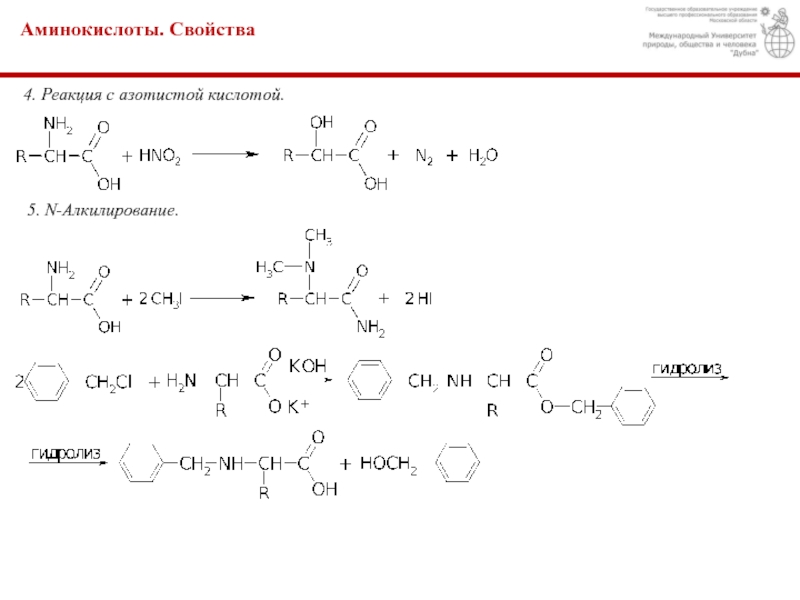
An important aspect of the use of drugs for symptomatic therapy is their safety and tolerability. When prescribing NSAID therapy, special attention is paid to the undesirable effects inherent in the drugs of this group, primarily from the gastrointestinal tract and the hematopoietic system. Abdominal pain, diarrhea, exacerbation of gastritis or peptic ulcer, hepatic reactions – this is not a complete list of possible adverse events. In this aspect, the lysine salt of ketoprofen has advantages over ketoprofen, since it causes side effects much less frequently. Due to its chemical composition, OKI quickly mixes with a neutral pH environment and, due to this, has almost no irritating effect on the gastrointestinal mucosa. According to L. Bellussi et al. (1996), against the background of a 10-day intake of the OCI drug, the overall tolerability of therapy by patients and gastroscopy data were comparable with those when taking placebo [10].
To achieve the desired effect of pharmacotherapy, a patient with acute infectious and inflammatory diseases of the pharynx must follow the following basic recommendations: completely give up smoking and alcohol; exclude hot, cold, spicy, salty foods and drinks from the diet; in the absence of contraindications, conduct warming and distracting physiotherapy procedures at home.
Thus, the rational use of drugs for symptomatic therapy allows not only to achieve a positive clinical effect in the treatment of acute inflammatory diseases of the pharynx, but also to increase the level of patient satisfaction with the results of treatment.
Literature
1. Babiyak V.I., Govorukhin M.I., Mitrofanov V.V. Some psychological aspects of the problem of human life quality // Russian otorhinolaryngology. 2004. No. 1 (8). pp. 3–6.
2. Vesyaeva A.A. Treatment of chronic pharyngitis associated with pathology of the gastrointestinal tract: Proceedings of the XVII Congress of Otorhinolaryngologists of Russia, Nizhny Novgorod, June 2006, pp. 165–166.
3. Menshikov V.V. (ed.), Dedov I.I., Makolkin V.I., Mukhin N.A. Clinical diagnosis – laboratory basis. M.: Labinform, 1997. 304 p.
4. Kolobukhina L.V. Viral infections of the respiratory tract // RMJ, 2000. V. 8. No. 13-14 (114-115). pp. 559–564.
5. Lerish R. Fundamentals of physiological surgery. Essays on the vegetative life of tissues / transl. from French B.M. Nikiforova M.: Medgiz, 1961. 292 p.
Essays on the vegetative life of tissues / transl. from French B.M. Nikiforova M.: Medgiz, 1961. 292 p.
6. Morozova S.V. Pain in the throat: causes and possibilities of drug therapy // BC. 2005. V. 13. No. 21. S. 1447–1452.
7. Ryazantsev S.V. Etiopathogenetic therapy of acute pharyngitis: Method. recommendations. St. Petersburg: St. Petersburg Research Institute of Ear, Throat, Nose and Speech, 2008.
8. Shpynev K.V., Krechikov V.A. Modern approaches to the diagnosis of streptococcal pharyngitis // KMAH. 2007. V. 9. No. 1. S. 20–33.
9. D’Arienzo M. Summary of product characteristics // Drugs Exptl.Clin.Res. 1984 Vol. X(12) . R. 863–866.
10. Bellussi L. et al. Antiphlogistic therapy with ketoprofen lysine salt vs nimesulide in secretory otitis media, rhinitis/rhinosinusitis, pharyngitis/tonsillitis/tracheitis // Note di Terapia Otorinolaringol. 1996 Vol. 46. R. 49–57.
11. Denk-Linnet D.-M., Mancusi G. Current diagnostics of swallowing disorders: the ENT specialists and phoniatricians role // European Archives of Oto-Rhino-Laringology and Head & Neck. June 2007 Vol. 264. Suppl. 1. HIC 5. R. 6.
June 2007 Vol. 264. Suppl. 1. HIC 5. R. 6.
12. Fatti F. Summary of product characteristics. Data on file, 1991.
13. Haefeli M., Elfering A., Aebi M. et al. What constitutes a good outcome in spinal surgery? A preliminary survey among spine surgeons of the SSE and European spine patients // Eur Spine J. 2008. 17. P. 104–116.
14. Ligniere G.C. et al. Ricenti Progressi in Medicina, II Pensiero Scientifico Editore. 1996 Vol. 87 (supplemento al #3).
15. Wewers M.E., Lowe N.K. A critical review of visual analogue scales in the measurement of clinical phenomena // Res Nurs Health. 1990 Vol. 13. R. 227–236.
Faculty of Biology St. Petersburg State University
| ||||||||||||
| TRANSFER AND RECOVERY | |
| EDUCATION | |
| SCIENCE | |
| EDUCATION DEPARTMENT | |
| ETHICS COMMITTEE | |
| STUDENTS AND TEACH LAM | |
| STUDENT COUNCIL | |
| LIBRARY | |
| EXPERT ACTIVITY | |
| JV ISOK AND TEACHER RANKING | |
| DEPARTMENT OF PRACTICE ORGANIZATION AND EMPLOYMENT PROMOTION | |
| ADMINISTRATION | |
| INFORMATION ABOUT SPbU | |
| GREEN CAMPUS | |
| NCMU “AGROTECHNOLOGIES OF THE FUTURE” | |
| RECTOR’S MEETINGS WITH STUDENTS |
Authorization
| Forgot your password? | |
Faculty of Biology St. Petersburg State University |
[ Expand all ] [ Collapse all ]
|

 with the expulsion of methanol to form a guanidino group (has 3 N attached to C, nidi)
with the expulsion of methanol to form a guanidino group (has 3 N attached to C, nidi)

